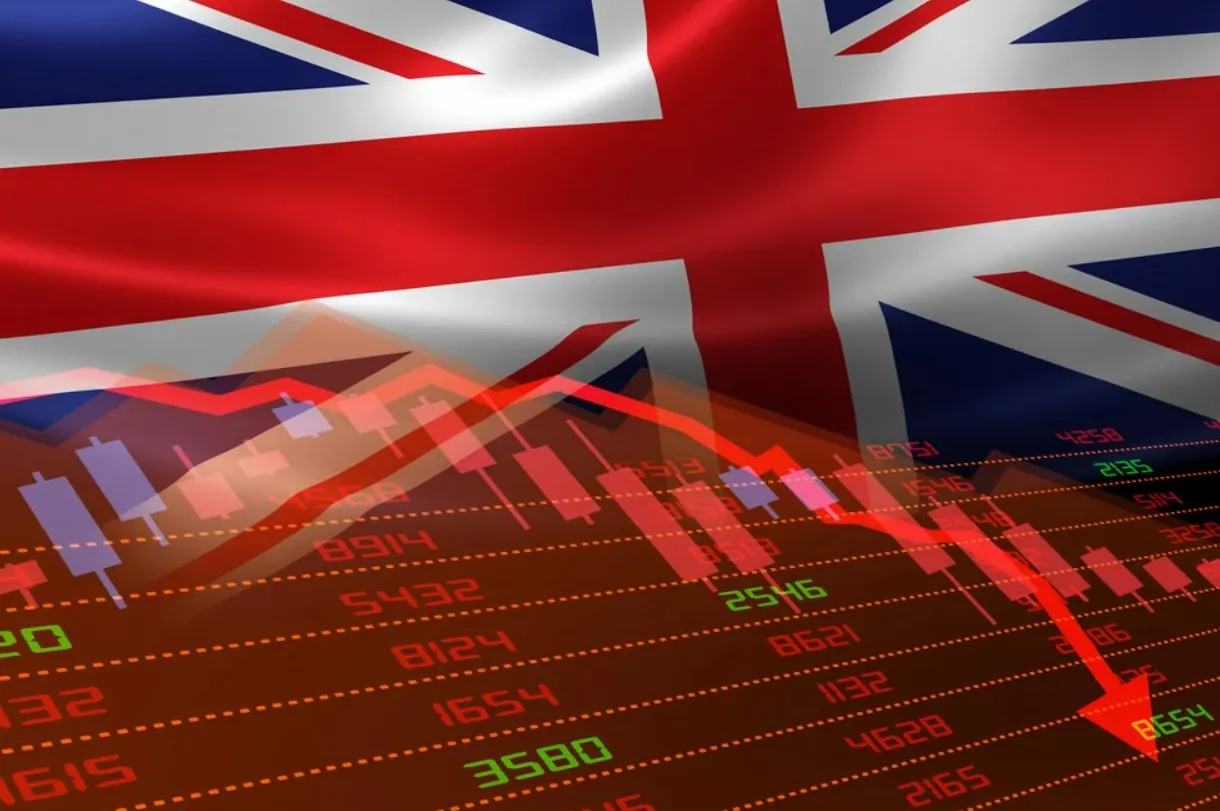- The British pound sees a 0.4% decline against the US dollar due to an unexpected economic contraction in July, raising concerns about the UK’s economic health.
- Despite the trend towards electronic payments, the use of cash has increased in the UK, driven by the cost of living crisis and a “huge jump” in small purchases.
- A resurgence of cash payments is seen, and forecasts indicate that cash will not disappear completely, with estimates of 3.3 billion cash payments by 2032.
The British pound saw a 0.4% decline against the US dollar, hitting its lowest point in almost three months, in response to an economic contraction in July.
This decline is partly attributed to strikes and the impact of bad timing on UK production.
Economic contraction in the United Kingdom
Financial experts were not anticipating such a sharp economic contraction, as data from the Office for National Statistics (ONS) revealed that the UK economy declined by 0.5% in July, beating expectations for a 0.2 fall. %.
This figure represents the largest reduction in monthly production since December 2022, which has raised concerns about the country’s economic health.
“The fall in GDP in July suggests that underlying growth has lost momentum since the beginning of the year. That would make sense given that the dampening effect of higher interest rates should start to become more noticeable at this point.” said Paul Dales, chief economist at Capital Economics in the UK.
Since December 2021, the Bank of England has increased interest rates on 14 occasions, taking them to their highest level in 15 years, reaching 5.25%.
Amid this uncertain economic situation, financial market operators are betting 80% that interest rates will increase again at the next monetary policy meeting and only 20% that they will remain unchanged.
In addition, the price of the terminal tariff has decreased from 6% to approximately 5.6%.
“We will probably see further falls in the pound and I still don’t see much reason to be optimistic about the UK economy heading into the autumn,” said TraderX analyst Michael Brown.
The British pound had peaked at over $1.31 in mid-July, but has since declined by more than 5% compared to the US dollar, which has risen to its highest level since March.
“We have this unexpected disinflation in the United States, with a labor market that remains strong and a GDP that grows 2% every quarter […] I see no reason to bet against the dollar at this time, since the economy American has everything going for him,” Brown said.
The ONS also identified other factors that affected British growth in July, including strikes in hospitals and schools, as well as wet weather that affected production in the retail and construction sectors.
Resurgence of cash
At the same time, even with the resurgence of cryptocurrencies and the involvement of the UK in their implementation and regulation, cash use has returned in the UK, with an increase in payments made in notes and coins for the first time in a decade, according to data from UK Finance (source TheGuardian).
Despite the long-term trend of declining cash use, the cost of living crisis has led many people to turn to cash to help manage their budgets.
Additionally, last year saw a “huge jump” in the total number of payments made using all methods, in part because people were making more small purchases rather than large purchases.
According to UK Finance, debit cards now account for half of all payments in the UK, and contactless payments increased by 30% in one year, reaching 17 billion. In total, the number of payments via all methods increased to 45.7 billion, up from 40.4 billion in 2021 and 35.6 billion in 2020.
However, the most surprising data was the resurgence of cash payments, which increased by 7% last year, reaching 6.4 billion payments, despite the trend towards the exclusive use of cards by many companies.
Despite this trend, UK Finance appears to have revised its forecasts, as it now predicts that around 3.3 billion cash payments will be made in the UK by 2032, representing around 7% of total payments.
This change in forecasts could indicate that the use of cash is far from disappearing completely.
Additionally, data suggests that buy now, pay later (BNPL) growth in the UK may be stabilizing.
Around one in eight people in the UK reported using BNPL to make purchases in 2022, a proportion that remained the same as in 2021.
However, 8% of people over 65 reported using BNPL, up from 4% in 2021, suggesting growth among this demographic.

